Description
3D printing, also called “additive manufacturing”, is a process of making three dimensional solid objects from a digital, computer aided design (CAD) or animation modelling software.
The 3D printer transforms the design into thin, virtual, horizontal cross-sections and then creates successive layers of liquid, powder or sheet material in such a way that it builds up the model from a series of cross sections. These layers, which correspond to the virtual cross section from the CAD model, are joined together or fused automatically to create the final shape.
The principle advantage of additive fabrication is its ability to create almost any shape or geometric feature and to do so much more quickly. Construction of a model using contemporary methods can take from several hours to several days, depending on the method used and the size and complexity of the model. Additive systems can typically produce models in a few hours, although it can vary widely depending on the type of machine being used and the size and number of models being produced simultaneously.
The standard data interface between CAD software and the machines is the Standard Tessellation Language (STL) file format. An STL file approximates the shape of a part or assembly using triangular facets. Smaller facets produce a higher quality surface. Virtual Reality Modeling Language (VRML)1 files are often used as input for 3D printing technologies that are able to print in full colour.
3D printers give designers and concept development teams the ability to produce parts and concept models using a desktop size printer. The technology has been used extensively in the fields of designing and prototyping in architecture, engineering and construction, automotive, aerospace, dental and medical industries, education, jewellery, footwear, geographic information systems, civil engineering, industrial design and many others.2
Agreements offering 3D printing services must ensure that the design and model (product) to be created must first and foremost, be legal and non-infringing as well as requiring the customer to undertake numerous other warranties and other obligations (see clause 3 in this Contract).
[1] VRML (and its successor, X3D), have been accepted as international standards by the International Organization for Standardization (ISO).
[2] Adapted from Wikipedia.



